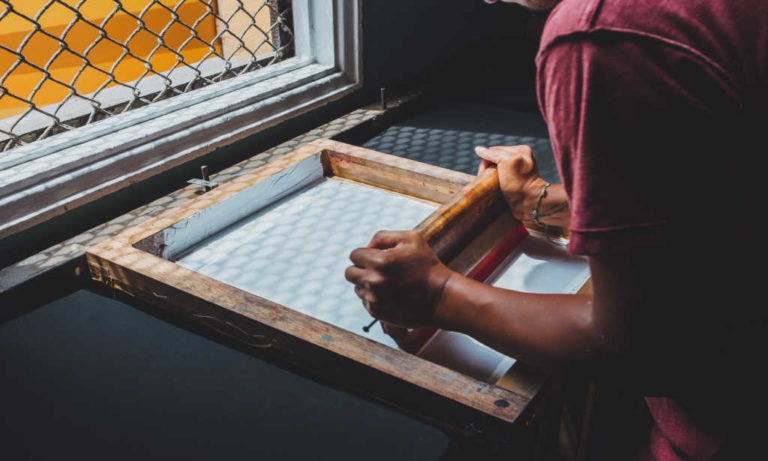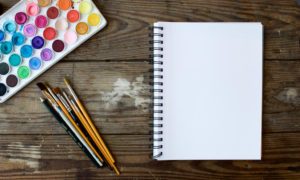The soul of any Print on Demand Dropshipping business is Printing. Folks today are more likely to wear products that have attractive prints on them. Apart from clothes, products like coffee mugs, posters, coasters, pop grips, notebooks are also popular when there are appealing prints on them. With the ease of ordering online and customizing it according to their designs, the trend of prints is here to stay.
Printing is paid special emphasis before deploying the product out for sale. If you happen to be an owner of an eCommerce store, it is essential that you update yourself with the latest popular culture, printing techniques, dyes, materials required and designs. Your printing technique must be carefully decided as it determines the quality and durability of the prints.
From a layman point of view, the print and cloth fabric decide whether customers will buy products from you or not.
There are many techniques available and like every story has two sides, they have their pros and cons.
Printing Techniques Used By Printrove
Printrove is a leading print on demand drop shipping company. It uses three main printing techniques to print on t-shirts and other products.
They are:
- Screen printing
- Direct-to-garment printing (DTG)
- Sublimation printing
How Printrove Chooses The Printing Technique
The printing method we use depends on the product, your design and the quantity required in one go.
The design can be finalised at any point of time. The first question that arises is about the quantity. If you are a new eCommerce merchant then your sales flow would be comparatively less and you cannot put in a lot of money to print items in bulk. In this case, you must choose the direct-to-garment (DTG) printing technique. If you are ordering products in bulk, then screen printing would be more suitable.
Coming back to design, it is the most important deciding factor for which printing method you should use. The size, colours, patterns and the type of design dictate the appropriate method.
Let’s get some deep insights about each printing technique and how it works. Here it goes.
Screen Printing
Screen printing is the process of pulling a layer of ink over a screen to produce a design. A special screen has to be made for each design which indicates that it should be a bulk order i.e there should be multiple orders of the same design.
This method can be used to print items in bulk and is economical.
How Screen Printing Works
- The woven mesh stencils are placed on the fabric and the ink is pushed through it.
- The stencils have openings that make space through which the ink will pass to create an impression of the design.
- The ink is then pushed over the mesh and pulled by a fill blade or squeegee. As the blade is pulled, the ink is pushed through the mesh onto the garment.
Only one colour can be used at a time. As the number of colours is limited, each colour requires more time, more screens, stencils, and more money.
So, it is compatible only for simple designs with fewer colours and of the same design at a time.
Pros of Screen Printing:
- Cost-effective for bulk orders
- Versatile design placement
- Volume discounts (More the orders, the cheaper the price)
Cons of Screen Printing:
- Not cost-effective for multiple colours
- suitable for only simple shape designs
- large upfront investment
- One design per batch
Watch:
Direct to Garment Printing
Direct to Garment printing (DTG) is just like using a printer to print on fabric. It can support more detailed designs with as many colours as you want.
How DTG Works
- A printer directly applies the ink onto the t-shirt with inkjet technology.
- It is similar to printing on paper.
- A special printer prints the ink directly onto the garment in the desired design.
- It uses special water-based inks, which are absorbed by the fibres of the garment.
As the printer is precise, you’ll be able to print images in much higher detail and with more colours when compared to screen printing. You can even customise your designs with DTG printing.
This method is optimal for people who don’t have a lot of money to make an up-front investment for a large batch, they can even order separately.
Pros of DTG printing:
- Extensive colour options
- Maximum detail in design
- Suitable for small batches
- Minimal upfront investment
- Easily customized design
Cons of DTG printing:
- Not cost-effective for extremely large batches
- No volume discounts
- Limited design placement
Watch:–
Sublimation Printing
Sublimation printing is the process of printing onto a special sheet of paper and then transferring that image onto the fabric. This is the most preferred method of printing as it lasts long and you will never have the unfortunate “peeling” effect of a well-worn t-shirt.
Here is How Sublimation Printing Works:
- Sublimation printing is an alternative to traditional inkjet transfers. The sublimation ink actually becomes a part of the substrate, let’s take a mug as an example. The Inkjet transfers use a carrier sheet to print the ink on top of the fabric.
- When the ink from the special sublimation transfer paper is heat pressed onto your mug and reaches a certain high temperature, the ink is transformed into gas.
- It also opens up the pores of the polyester, polymer, or polymer-coated on the mug you’re heat pressing onto.
- Once the heat is transferred on to the mug, it is released and allowed to cool. In this process, the gas again turns back into solid and the pores close permanently.
- The ink is then encapsulated within the polymer coating of the mug.
If done correctly, the image won’t fade or disappear over time. It gives an extremely smooth finish.
The sublimation printing process can only be used on 100% pure polyester apparel or substrates with a special polymer coating. It will be suitable for coffee mugs, phone cases, pop grips, mugs, and mouse pads. Another thing is that the sublimation inks can only be used on a white base. It is not possible to do sublimation on a dark garment.
Pros of Sublimation Printing:
- Prints all over the garment
- Multiple colour options
- Maximum detail in design
- Suitable for small batches
Cons of Sublimation Printing:
- Not available on all garments
- Cannot be done on 100% cotton fabrics
- Can be printed only on a white base
Watch:
Why Printrove?
Printrove is a print-on-demand drop shipping company.
We print and ship print products for online stores. We offer completely white-label products, so everything we do is under your brand.
With Printrove, it’s super easy for anyone to start a business without any upfront costs. You don’t have to deal with the hassle of out of stock or manage the inventories.
We print our products with these 3 technologies and ensure the quality is up to the mark. To know more about drop shipping or to get in touch with us>> Click here.
We’re happy to help!
Conclusion:
Printing techniques are of utmost importance based on the type of product. Selecting a feasible printing technique is the real challenge as you have to consider multiple factors of designing and demands.
If you plan on starting your own eCommerce store, drop shipping will be extremely helpful. The burden of printing and delivery will be lifted off your head and you can focus on setting up your business smoothly.
The drop shipper will print, pack and deliver your product to your customers. You just have to give the order, count and design. As simple as that!
Hope this helps! If you would like to start your own eCommerce store, get in touch with us.




